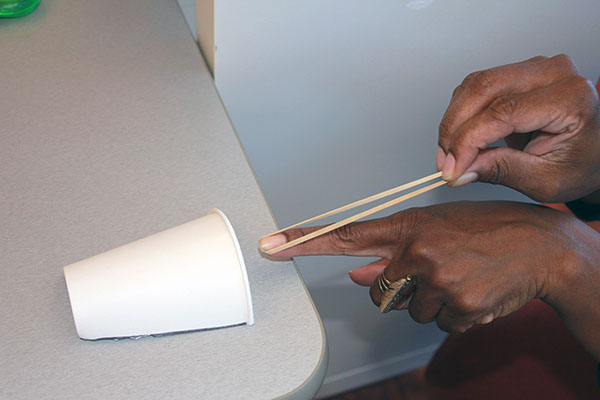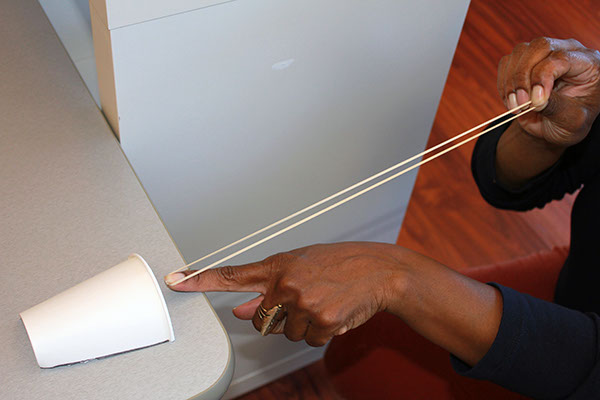Procedure
Condition 1
(short stretch)
Condition 2
(medium stretch)
Condition 3
(long stretch)
Procedure:
- You will stretch your rubber band to three different lengths – short stretch, medium stretch, and long stretch. Each length of the rubber band is a “condition” of your experiment.
- Conduct 3 trials for each condition.
- For the 3 trials for each condition, make sure the rubber band is stretched exactly the same length and that the cup starts in the exact same place.
- Carefully aim the rubber band at the same spot on the cup (so the cup will move in the same direction).
- Record how far the cup moves for each trial. Then calculate the mean distance for each of the 3 conditions.

Condition 1 Data Collection:
Potential energy (represented by rubber band stretch):
Length of rubber band stretch = ______ cm
First Trial:
Cup moved ______ cm
Second Trial:
Cup moved ______ cm
Third Trial:
Cup moved ______ cm
Kinetic energy (represented by cup movement):
mean cup movement = ______ cm

Condition 2 Data Collection:
Potential energy (represented by rubber band stretch):
Length of rubber band stretch = ______ cm
First Trial:
Cup moved ______ cm
Second Trial:
Cup moved ______ cm
Third Trial:
Cup moved ______ cm
Kinetic energy (represented by cup movement):
mean cup movement = ______ cm

Condition 3 Data Collection:
Potential energy (represented by rubber band stretch):
Length of rubber band stretch = ______ cm
First Trial:
Cup moved ______ cm
Second Trial:
Cup moved ______ cm
Third Trial:
Cup moved ______ cm
Kinetic energy (represented by cup movement):
mean cup movement = ______ cm
